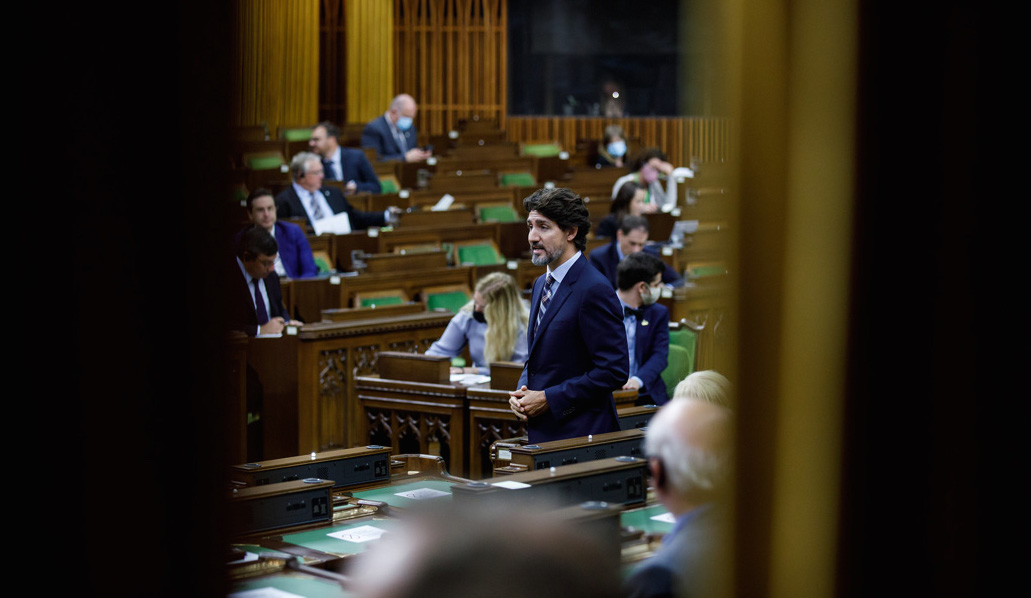Canadian business leaders are calling for the Trudeau government to announce a fiscal anchor in its next budget, expected in March or April.
Supported by deficit-fighting economists and former senior government officials who have been promoting austerity for decades, Goldy Hyder and his Business Council chief executives want to “anchor” government spending to the level of government debt.
The only fiscal anchor worthy of support is full employment.
Canada has a deficit because the pandemic has decimated the job market. In the absence of growing employment, income support payments have soared and government revenues have tanked.
At the height of deficit hysteria in 1996, a University of Manitoba economist, the late Ruben C. Bellan, showed that historically the government deficit turned to a surplus when the unemployment rate descended towards full employment (three per cent) and exploded when unemployment climbed, as it did in 1982 — reaching 13.1 per cent.
Because of austerity, it was only in 2019 that the unemployment rate returned to levels last seen in 1976.
Bread and butter issues matter most in politics. In Canada as elsewhere, citizens judge governments on how well the economy is doing in providing decent jobs and rising incomes.
Knowing this, governments emphasize job creation every time they make a spending announcement.
Unfortunately announcing “job creation” is usually code for handing out subsidies to corporations and tax cuts to the wealthy, which — far from being the best way to create jobs — do not succeed in reducing unemployment, according to best recent research, which was not ignored by the World Economic Forum, a.k.a. the club for the rich.
Following reflection and study about how to overcome the Great Depression, economists John Maynard Keynes and Michal Kalecki were able to show how governments could not only promote employment creation, they needed to do it actively through public investment: otherwise economies stagnated.
While conventional opinion argued that government spending needed to be reduced for budgetary reasons, Keynes explained that when governments maintained employment through adding investment to the economy … public finances looked after themselves.
In the period following the Second World War, governments led the way in promoting economic development through an active public sector as the key to job creation, and all important wage and salary increases.
By the mid-1970s increases in the price level — consumer inflation — became the main preoccupation. Economic growth slowed and unemployment rose as central banks raised interest rates to “cool off” the economy.
The anti-inflationary policy direction imposed restraint on governments across the Western world. Prosperity was now supposed to depend on balancing the budget to keep inflation under control.
A level of unemployment below 7.5 per cent was redefined as inflationary. It was as if all the advances in economic knowledge had never occurred. Instead of being assisted by government investment, the long-term unemployed were all of a sudden necessary as part of the fight against inflation.
Economic growth has been routinely defined as the rate of annual increase in Gross Domestic Product (GDP). Such increases are made up of the “bad,” such as vehicle accidents that make a living for car repair shops, and the “good,” such as ticket sales for cultural events.
There has never been any point to extolling overall increases in GDP. What is needed is weighing the overall impact on society of growing particular economic sectors.
With climate change staring civilization in the face, the issues facing Canadians are how to introduce ecological considerations into promoting good economic activity, and, especially, how to limit bad activity.
The pandemic has exposed all the weaknesses of the gig economy: precarious work, income inequality, no mandatory sick leave, underfunded health care, inadequate access to housing, expensive education, and the absence of a social safety net. The scandalous conditions in senior long-term care homes have turned them into death traps.
There are signs the Trudeau government is pivoting away from the austerity economics imposed for over 40 years. Spending in the pandemic period has been generous in comparison to cutbacks orchestrated by successive Liberal and Conservative governments since 1979.
The Trudeau government was first elected in 2015 pledging to run a deficit of $10 billion to build up needed infrastructure. The 2020 Economic and Fiscal Update reveals the damage done by the pandemic has driven the deficit to over $340 billion (without ever fulfilling the infrastructure promise), 34 times greater than the courageous $10 billion promise of six years ago that likely won them the election.
In her Mike McCracken lecture delivered January 13, Lael Brainard, a governor of the U.S. central bank (the Federal Reserve or Fed), pointed to “maximum” employment as replacing “full” employment in the Fed mandate.
This represents a sea change certain to affect thinking in other capitals, including Ottawa.
Justin Trudeau is expected to trigger a spring election, arguing he needs a mandate to implement his upcoming budget.
The choice for the Liberals is clear: follow the traditional advice of big business and limit spending through austerity, or aim at maximum employment, and reap the budgetary fruit.
Duncan Cameron is president emeritus of rabble.ca and writes a weekly column on politics and current affairs.
Image credit: Adam Scotti/PMO



